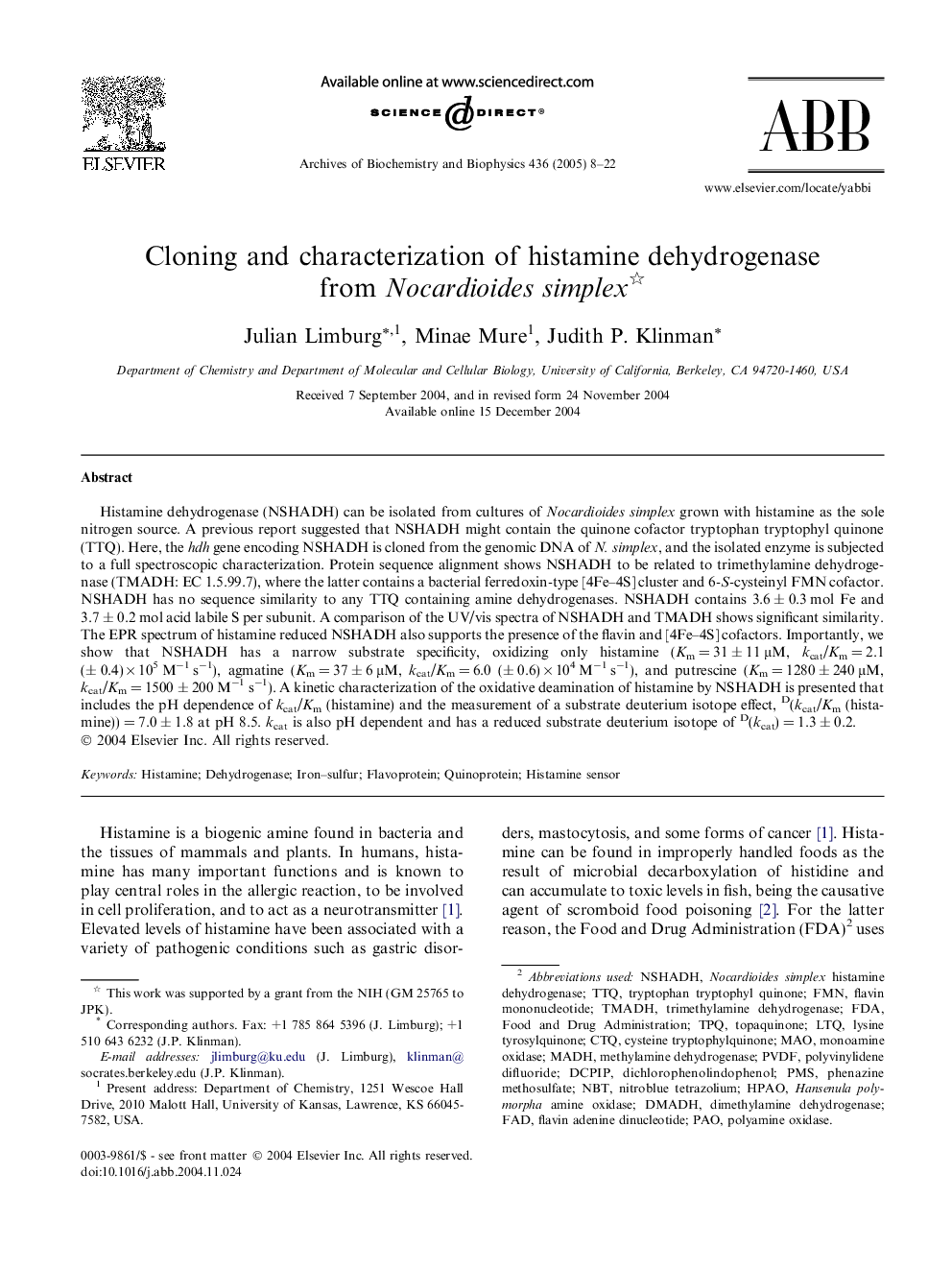| Article ID | Journal | Published Year | Pages | File Type |
|---|---|---|---|---|
| 9882261 | Archives of Biochemistry and Biophysics | 2005 | 15 Pages |
Abstract
Histamine dehydrogenase (NSHADH) can be isolated from cultures of Nocardioides simplex grown with histamine as the sole nitrogen source. A previous report suggested that NSHADH might contain the quinone cofactor tryptophan tryptophyl quinone (TTQ). Here, the hdh gene encoding NSHADH is cloned from the genomic DNA of N. simplex, and the isolated enzyme is subjected to a full spectroscopic characterization. Protein sequence alignment shows NSHADH to be related to trimethylamine dehydrogenase (TMADH: EC 1.5.99.7), where the latter contains a bacterial ferredoxin-type [4Fe-4S] cluster and 6-S-cysteinyl FMN cofactor. NSHADH has no sequence similarity to any TTQ containing amine dehydrogenases. NSHADH contains 3.6 ± 0.3 mol Fe and 3.7 ± 0.2 mol acid labile S per subunit. A comparison of the UV/vis spectra of NSHADH and TMADH shows significant similarity. The EPR spectrum of histamine reduced NSHADH also supports the presence of the flavin and [4Fe-4S] cofactors. Importantly, we show that NSHADH has a narrow substrate specificity, oxidizing only histamine (Km = 31 ± 11 μM, kcat/Km = 2.1 (± 0.4) Ã 105 Mâ1 sâ1), agmatine (Km = 37 ± 6 μM, kcat/Km = 6.0 (± 0.6) Ã 104 Mâ1 sâ1), and putrescine (Km = 1280 ± 240 μM, kcat/Km = 1500 ± 200 Mâ1 sâ1). A kinetic characterization of the oxidative deamination of histamine by NSHADH is presented that includes the pH dependence of kcat/Km (histamine) and the measurement of a substrate deuterium isotope effect, D(kcat/Km (histamine)) = 7.0 ± 1.8 at pH 8.5. kcat is also pH dependent and has a reduced substrate deuterium isotope of D(kcat) = 1.3 ± 0.2.
Related Topics
Life Sciences
Biochemistry, Genetics and Molecular Biology
Biochemistry
Authors
Julian Limburg, Minae Mure, Judith P. Klinman,
